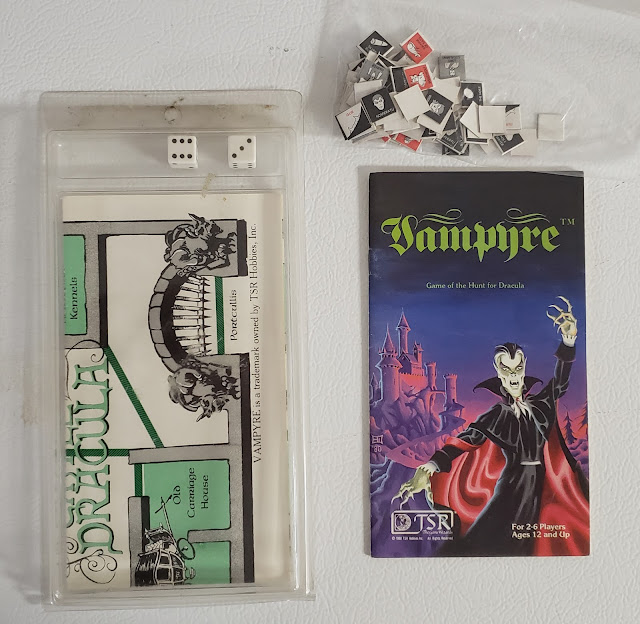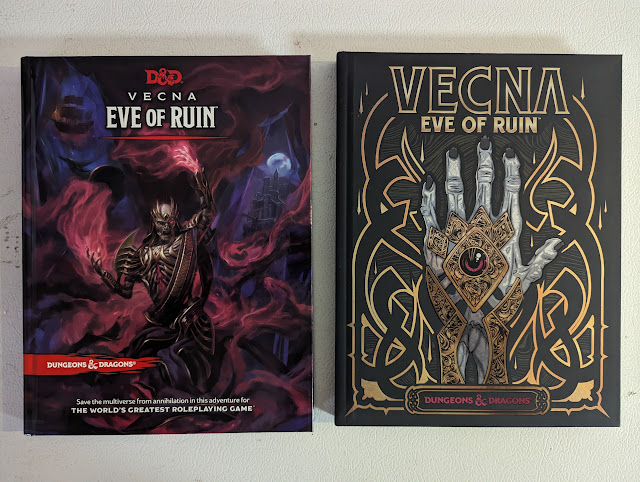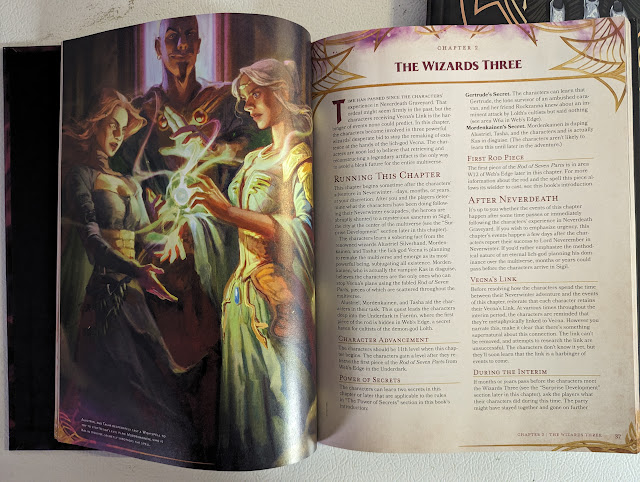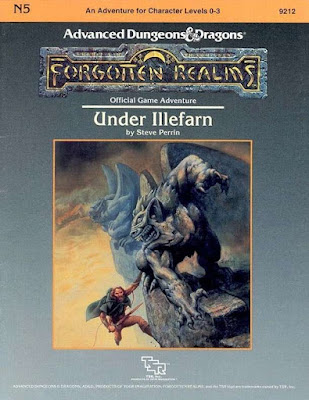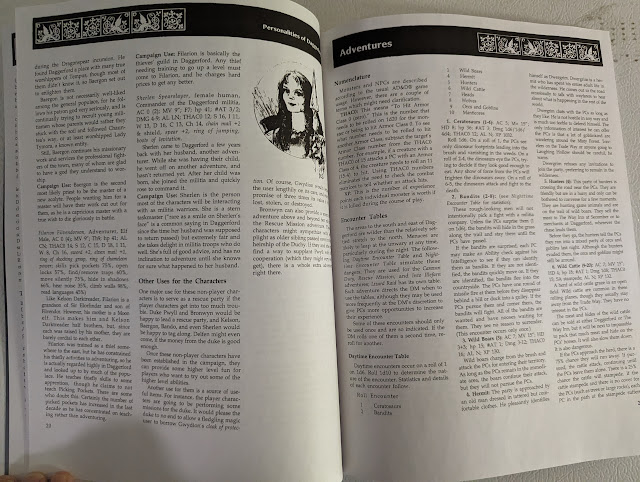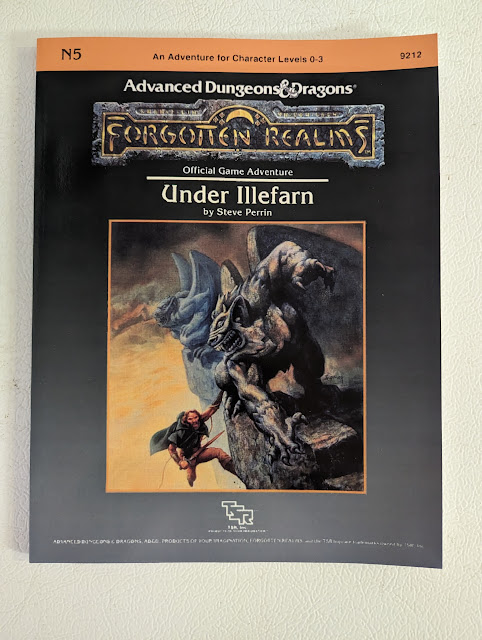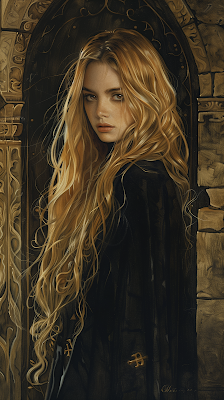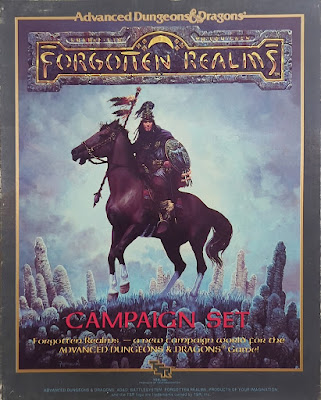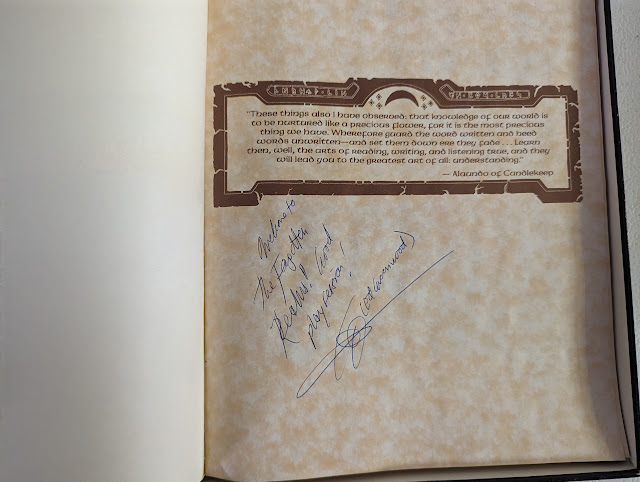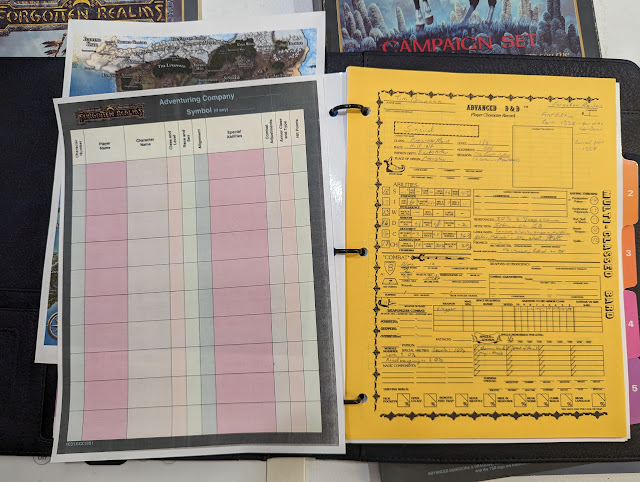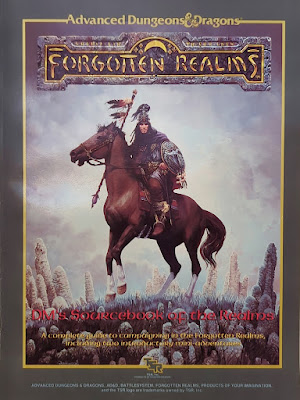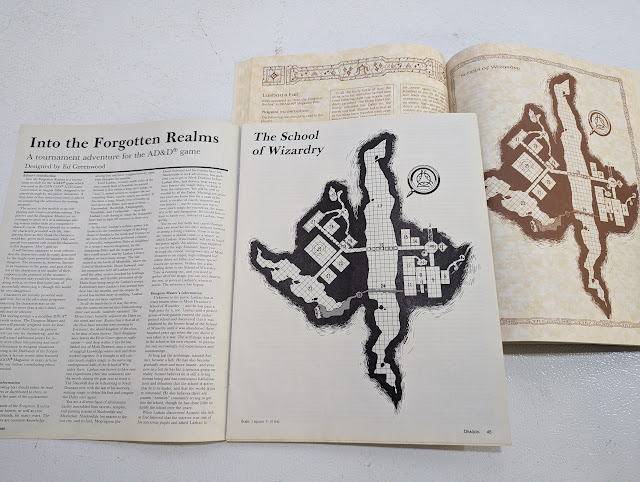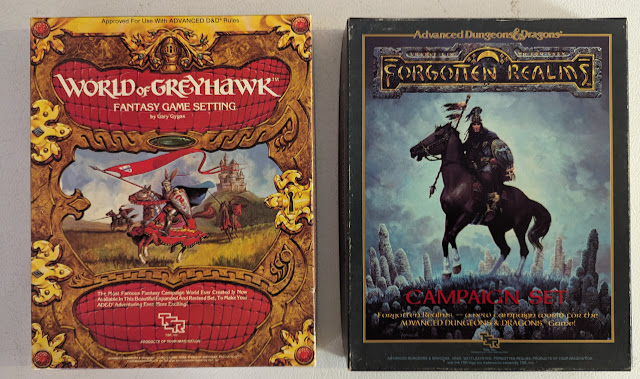My exploration of the Forgotten Realms continues with the next adventure on my list, N5 Under Illefarn by Steve Perrin. I actually
ran this adventure a while back at the start of my
5e Second Campaign long ago. My first real attempt at getting a Realms game going. While that game would end up
in different directions, the adventure is still a solid one.
N5 Under Illefarn
by Steve Perin. 1987. 50 pages, color covers (Jeff Easley) and maps (Stephen Sullivan), black & white art (Luise Perenne).
I am reviewing the PDF and Print on Demand versions from DriveThruRPG.
This is a "Novice Level" adventure and, likely due to timing, became connected to the Forgotten Realms. It is also the first of the N series to feature the Forgotten Realms banner. Something similar happened to the H series on the other end of the level spectrum.
When I talked about Module N4 Treasure Hunt, I mentioned that it was a great starting adventure that missed a little of what also made B2 Keep on the Borderland so great. This is fine since we already had Keep on the Borderlands. N5 strikes a middle ground. There is a base of operations, plenty of "wild" areas to explore, and a hook. It also works as a direct sequel to N4. You can play it stand-alone (as I did in 2017) or as a follow-up. Both have advantages.
Like N4, we are given an overview of the AD&D 1st Ed game, in particular the races and classes. Now, back in 2017, I said: "I am going to run it through like an AD&D game. So no tieflings or dragonborn. More gnomes, though, never have enough of those." That was a mistake in retrospect. If anywhere is open to Dragonborn, Tieflings, and all the new post-AD&D 1st-ed races (remember, tieflings are AD&D 2nd-ed), then it will be Faerûn. There is a bit on how you all get to Daggerford and what happens once you are there. I admit I did not like the idea of the characters needing to be in the Town Militia until I started thinking of this adventure as akin to an episode of "Cops" or, more to the point, the parody "Troops."
The base of operations for the characters is the small frontier town of Daggerford. So, like the Keep. From here the characters can go on quick adventures and then come back. An idea implicit for B2 KotBL, but here it is baked in.
The DM's section gives some background on the village of about 300 people and some 1,000 total living in the surrounding area. Sounds like where my wife grew up. The area and the city make are given. This includes many of the shops and building and what surrounds the village. There is even a bit on the "Big City" Chicago, I mean Waterdeep.
The main personalities of the town are also detailed. One of the things I had to used to (and get over) was that the Realms is about people. I can choose to use who I want. In 1987 this annoyed me, but in truth I was already switching my point of view then. Now? Now it is great. I mean, do I need to use Duke Pwyll Greatshout Daggerford? No. But why would I not want to?
This covers about the first half of the book. After this are adventures.
What kind of adventures? Lots! The first page has the AD&D staple, the Random Encounter Tables. One of the outcomes is a Ceratosaur! Imagine this. You are a still a newbie adventurer. You just recently learned which is the pointy end of the spear and which is the end you hold. Now you are on milita duty, and someone finds dinosaur tracks on your very first day on what you were told was going to be dull work making sure kids don't steal apples in the marketplace.
Kudos to Steve Perrin for getting going. And that is just one random encounter. I mean there is also a hermit. Yes, I said he is the same one from the KotBL. Why not. There are also werewolves, which I am using later on.
Among the detailed adventurers are a raid by Lizard Men (why I grabbed this in 2017 to be honest), basic Caravan duty, a kidnapped daughter of the Duke, and the titular Illefarn in the Laughing Hallow. The adventures range from a couple of pages to several.
The best thing about this adventure. Well, one of the best things. You can run it in many short adventures to get new players into the game. Need to spend an extra hour explaining rules? No worries, do that and send them on Militia duty to guard a caravan against orc raiders. That's a solid session.
Note About the Pring on Demand Print
The PDF from DriveThruRPG looks great and served me well in 2017. Recently I also grabbed the Print on Demand copy from DriveThru. There is some dithering from lower resolution art being brought up to print quality, but the text looks like it has been redone so it is nice and sharp and easy to read. I should note that it is not all the art. Some look rather crisp and clear as well. They may have had some of the higher resolution versions still on hand.
Again, we have a great introductory adventure. Not just good to introduce people to the AD&D 1st Edition game but also a great way to ease into the Forgotten Realms. Waterdeep is too big of a bite for new players (and characters) and many of the "big names" are still too big. This is nice little village with some fun problems to solve. A taste of adventure. An appetizer in small portions OR more akin to Tapas or Dim Sum. Small plates that can add up to a nice full meal.
Sinéad's Perspective
"Just a small-town girl. Livin' in a lonely world..."
At the outset of these reviews, I said I wanted to explore the Realms through the eyes of a native, but one that was just as naïve as me. Sinéad is that character.
She finally made it to the main land after surviving her own kidnapping and adventures in the Moonshaes and the Korrin Archipelago. And was absolutely broke. Like I said, at first I balked at the idea of forcing the characters into the Daggerford Militia, but in truth it works very well. Sinéad, given she knows how to play an instrument was given the job of trumpeter. She at least gets a spear too.
This actually works. I went back to look over her Baldur's Gate 3 setup and her background there was Militia as well. This was before I knew I could change it. So, yeah. I guess that is what I am doing.
When my oldest son gets off of work from his bakery job (he is a pastry chef and a damn good one) we work out what these characters are doing and roll some dice. It has been great really.
So. Sinéad is in the Militia. She has a shiny new trumpet, a not-as-shiny new spear, and a blue tabard proclaiming she is part of the militia. If she is going to survive the Realms, she will need some friends.
So, who do we have here?
Nothing Like the Sun...
Up first is Rhiannon. Yeah, I am embracing the clichés here. But in my defense, I did start her up with that in mind. She is a Dragon Magazine #114 witch. There is some evidence that Ed used the Dragon Magazine witches in his own game. She is a member of the "Sisters of the Moon" coven, something that will become important later on. If Sinéad is my Realms exploration character, and Larina is my witch exploration character, then Rhiannon is where they meet. Again. Expect clichés here. This my chance to go all out.
I already decided that Sinéad honors Sehanine Moonbow as her personal Goddess, even above that of The Earthmother of the Moonshaes. Maybe this is one of the reasons she wanted to leave. Rhiannon knows about Sehanine. She also knows about Selûne and, oddly enough, Shar. At this point, Sinéad doesn't know enough about Shar to find this odd.
Rhiannon is not in the militia, but she is the friend of someone who is.
Bad Moon Rising
The next character is an in-joke with my son and me, but I really liked where the character is going. Arnell Hallowleaf is a male moon elf cleric of Selûne. He is in the militia as a healer. There are obvious reasons why Sinéad would seek him out. He is a cleric for starters, also he is the first full-blooded moon elf she has met other than her own mother. So, this has given her a chance to find out more about the moon elves. Players of Baldur's Gate 3 might recognize this name. He is the father of Jenevelle Hallowleaf, aka Shadowheart, in the game. But that is not until DR 1492. Jenevelle is not born until DR 1447 and this is still DR 1358. Arnell is a young elf. His future human wife, Emmeline, has not even been born yet. So maybe (taking a page from Sarek of Vulcan's book) Rhiannon (a human) is his current girlfriend/wife. Which? I don't know, I have not gotten there yet.
I do know that at some point in this adventure, he is bitten by a werewolf and becomes one. His devotion to Selûne is what keeps his lycanthropy in check.
Both characters are here to let me explore some different ideas. Talking it over with my oldest, he suggested that if Johan were from the Realms, he would have been a cleric of Selûne. Arnell is not a Johan stand-in, but he will let me explore playing a cleric in the Realms. Rhiannon is my "don't just embrace the cliché, live it character." I'd love to see how far I can get with her as a "Dragon #114" witch.
Sinéad and Arnell finish their tour of duty and, along with Rhiannon, venture out into the wide world.


















